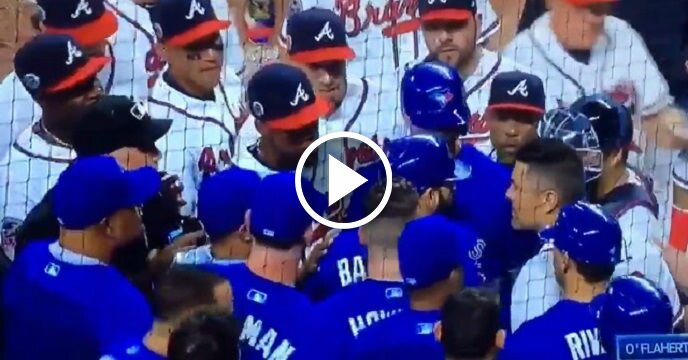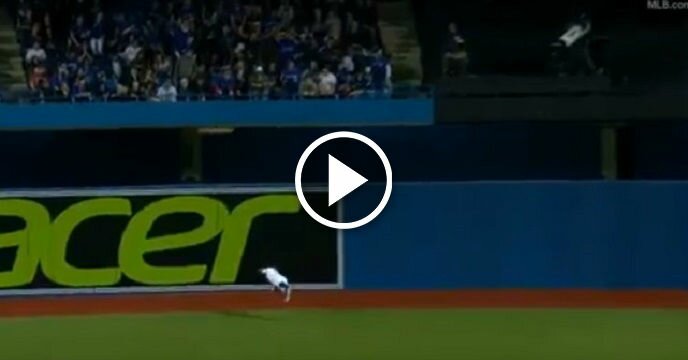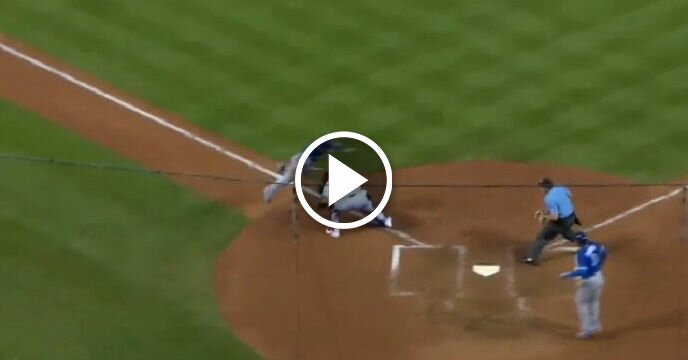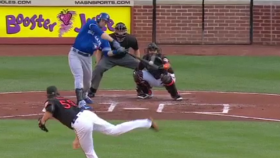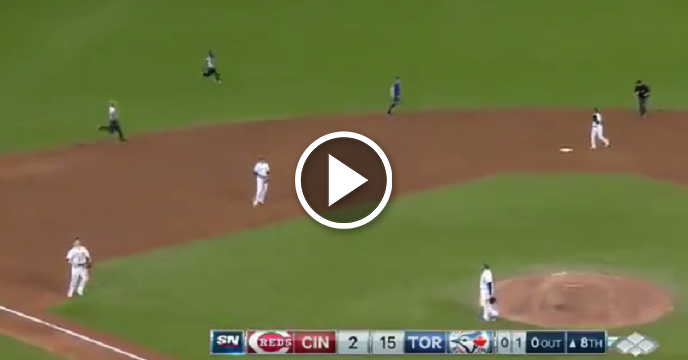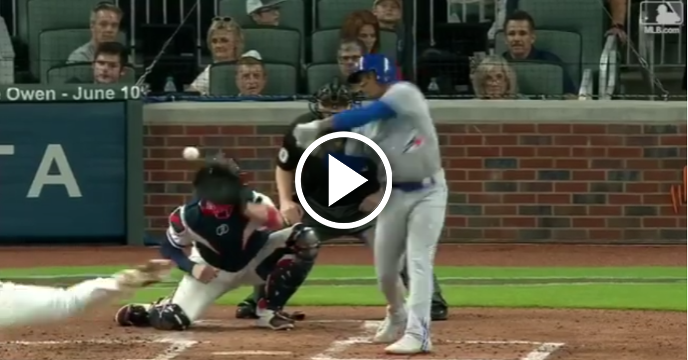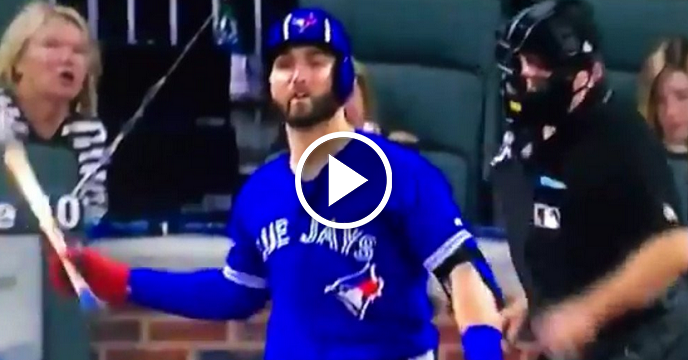After making the postseason for the first time in 22 years, the Toronto Blue Jays have had a relatively quiet offseason. Sure, the Blue Jays did add a terrific arm to their bullpen in Drew Storen, and while they lost a very useful player in contact hitter and speedster Ben Revere, they still have the powerhouse offense that clubbed an MLB-best 232 home runs last season.
That being said, question marks about the team still exist. After David Price signed a seven-year, $217 million deal to join the division rival Boston Red Sox, some are particularly concerned about the Blue Jays’ starting rotation. For the first time since 2012, they will also be without grizzled veteran Mark Buehrle, who hasn’t officially announced his retirement, but reportedly may not pitch in 2016. If he pitches anywhere, it’d be a surprise to see him return to Toronto.
One thing the Blue Jays did do, however, was sign J.A. Happ to a three-year, $36 million deal. The deal comes out to $12 million in AAV, which seems a bit hefty for a pitcher who has a rather shaky resume. Happ will be joining a rotation that will also feature Marcus Stroman, Marco Estrada, R.A. Dickey and most likely either Jesse Chavez, Drew Hutchison or perhaps even Aaron Sanchez.
Happ, of course, has a history with the Blue Jays. After coming over in a trade with the Houston Astros in the summer of 2012, the southpaw went 19-20 with a 4.39 ERA (90 ERA+), a 4.08 FIP and a 1.37 WHIP over a two-and-a-half season run in Toronto. He was traded to the Seattle Mariners after the 2014 season in exchange for outfielder Michael Saunders.
During his time in Seattle, Happ put up rather mediocre numbers, going 4-6 with a 4.64 ERA (82 ERA+), a 4.12 FIP and a 1.41 WHIP. After being dealt to the Pittsburgh Pirates, though, Happ was able to elevate his game to a place that it really hadn’t been since his early years with the Philadelphia Phillies — if ever.
Through 11 regular season starts with the Bucs, Happ went 7-2 with a 1.85 ERA (209 ERA+), a 2.19 FIP and a 1.03 WHIP. He accumulated 2.1 fWAR over that stretch as well.
Obviously, no one is really expecting that the now 33-year-old Happ will be able to post numbers such as those over the course of 2016. His overall fWAR of 3.3 was a career-high, easily eclipsing his previous career best of just 1.9. His overall bWAR of 3.0 was the second-best mark of his career, trailing only the 4.2 fWAR he put up with the Phillies back in 2009. However, it’s still worth taking a look at what he did differently with the Pirates last year and what it may mean for his prospects going forward.
The biggest change that jumps out is the improvement to Happ’s walk and strikeout numbers. Happ’s BB/9 was in good shape with the Mariners at 2.65, but it fell to just 1.85 with the Pirates. His K/9, on the other hand, was only 6.79 with the Mariners, but shot up to 9.81 with the Bucs. Overall, among pitchers who had thrown 170-plus innings, his 3.36 K/BB ratio ranked 28th last season, placing ahead of other starters such as Jeff Samardzija, Scott Kazmir and Yovani Gallardo. Each of those pitchers were (and still are in the case of Gallardo) free agents this offseason as well.
The other major change was the fact that Happ’s usage of his four-seam fastball made a major jump after the move to Pittsburgh. According to Brooks Baseball, Happ threw only 49.40 percent four-seamers with the Mariners last year, but 65.11 percent with the Bucs. He threw a few more cutters as well (13.06 vs. 15.46) while throwing less of the offspeed and breaking stuff.
Happ’s four-seamer and cutter were clearly plus pitches for him last year, and if he can continue to locate them well, he should be able to give the Blue Jays a solid middle-of-the-rotation arm. If one had to take an educated case, the best-case scenario for Happ in 2016 may very well be an ERA in the mid-to-high 3.00s through around 30 starts, which is about where his overall numbers ended up this past season.
For what it is worth, Fangraphs Steamer is projecting Happ to go 10-8 with a 3.93 ERA, a 4.17 FIP and a 1.28 WHIP in a 1.7 fWAR campaign. He is also projected to throw 146.0 innings and make 26 starts.
When an offense that features names such as Russell Martin, Edwin Encarnacion, Jose Bautista, Troy Tulowitzki and reigning AL MVP Josh Donaldson is coupled with a bullpen that will likely have Sanchez to go along with Brett Cecil, Roberto Osuna and Storen, the Blue Jays may not exactly need their starters to be lights-out all of the time. However, they will need the members of their staff to turn in quality starts and keep the team in the game, which is something Happ should still be more than capable of doing.
The World Series defending champions, the Kansas City Royals, have proven that if a team has a dominant back end of the bullpen, they don’t necessarily need to have the best starting rotation in the league. The New York Yankees are another team that appears to be emulating that mold, bringing in Aroldis Chapman in an offseason trade to join Andrew Miller and Dellin Betances.
Still, it is worth noting that Happ hasn’t exactly been a great example of a workhorse. The combined 172 innings he threw this past season were a career-high and the most he had thrown since 2009. It isn’t necessarily a bad signing, but the Blue Jays most certainly need to have realistic expectations. They may have also been wise to go after another pitcher who might have been more of a sure thing.
Obviously, bringing Price back would have been incredibly expensive and Zack Greinke, Johnny Cueto and Jordan Zimmermann signed massive deals as well. Even pitchers in the second tier such as Samardzija, Wei-Yin Chen and Mike Leake each received deals worth at least $80 million. A pitcher like the 32-year-old Kazmir, though, may have been a safer play for the Blue Jays than Happ.
Kazmir, who received a three-year deal from the Los Angeles Dodgers, was reportedly given $48 million (just $12 million more overall and $4 million in AAV more than Happ) and an opt-out after the first year. Since returning from independent ball in 2013, he has been on a rather impressive run over the past three seasons; as a matter of fact, Kazmir has thrown 183 or more innings in each of the past two seasons, and he had a combined ERA+ of 130 with the Oakland Athletics and Houston Astros this past season.
Although there is a draft pick attached to the signing, a pitcher like Gallardo may still be an interesting fit as well. After all, he is a guy who makes 30 starts and throws 180-plus innings every year. He was originally projected to get a deal in the $50 million range, but with Spring Training drawer closer with each passing day, it is possible that his price could soon come down as well.
Plus, it remains to be seen how the Blue Jays’ other starters will fare. It will be particularly interesting to see whether or not Stroman is ready to step into the role of the team’s ace. Estrada, who returned to the Blue Jays on a two-year $26 million deal, may have a hard time duplicating the 126 ERA+ he had last year as well. Hutchison may have won 13 games last year, but his ERA+ sat at a lowly 71. Toronto may also need the knuckleballing Dickey to turn in yet another 200-plus inning season, too.
Of course, the Blue Jays have a better bullpen now than they did a year ago, but their formula for winning now looks a bit like it did prior to the arrival of Price. At the time Price was acquired last summer, now ex-GM Alex Anthopoulos even described him in a press conference as the first No. 1 they’ve had since Roy Halladay. Buehrle and his steady 30-start, 200-inning arm could be a bigger subtraction than one might think as well.
Odds are, with so many great pieces, Toronto will most likely be in the AL East race by the time next summer roles around. That said, the Blue Jays are certainly rolling the dice with their current starting rotation, and while there may not be as many big names on the trading block this time around, they should be prepared to make yet another deadline blockbuster if things don’t work out exactly as planned.
All statistical information courtesy of Baseball-Reference, Brooks Baseball and Fangraphs
 Share
Share 


